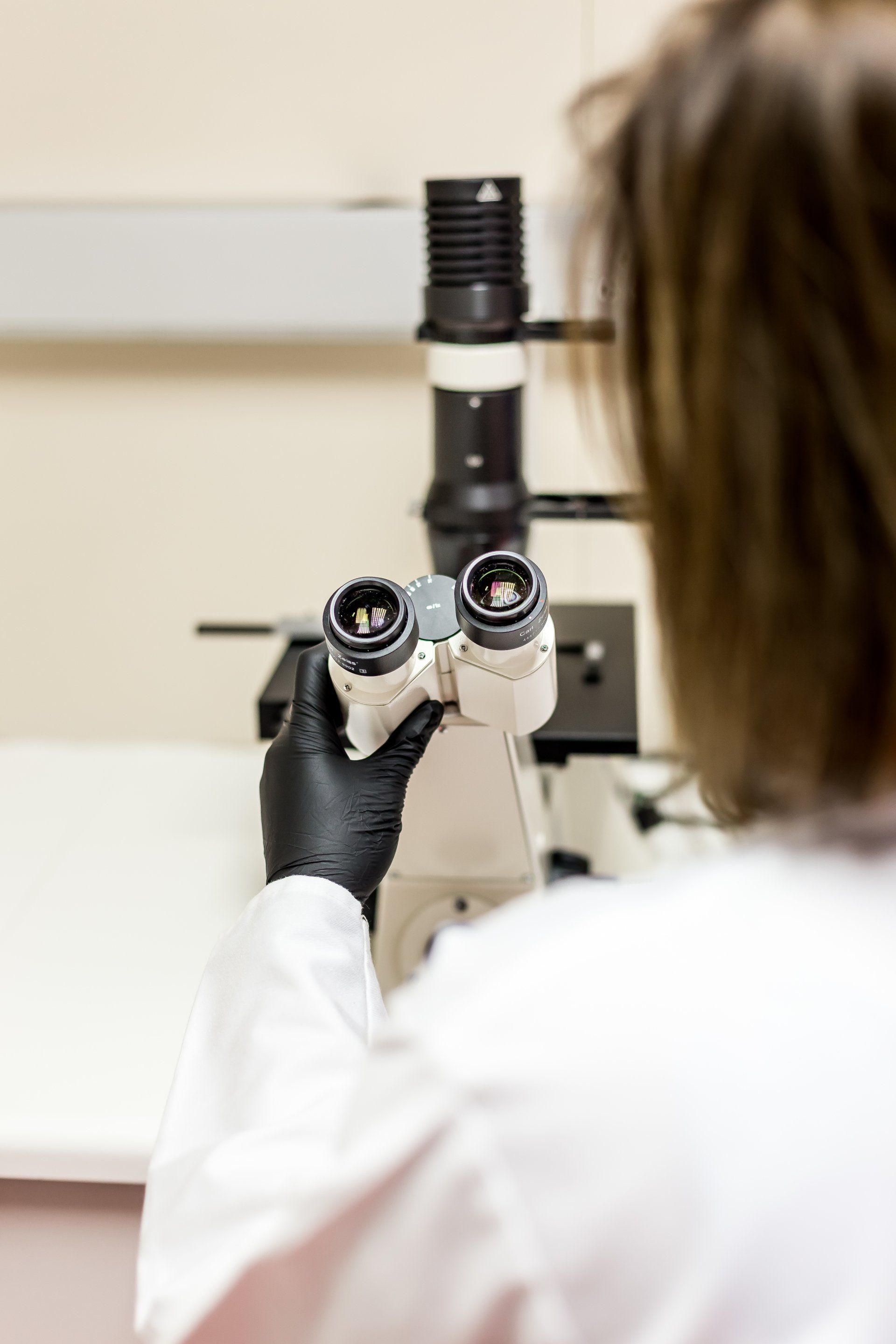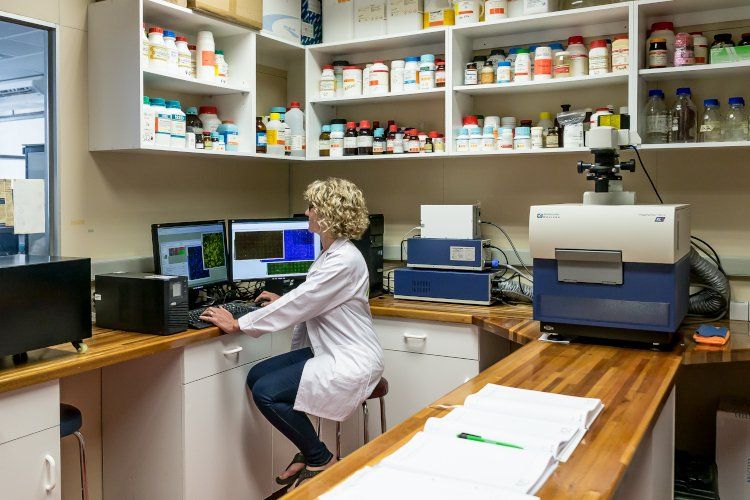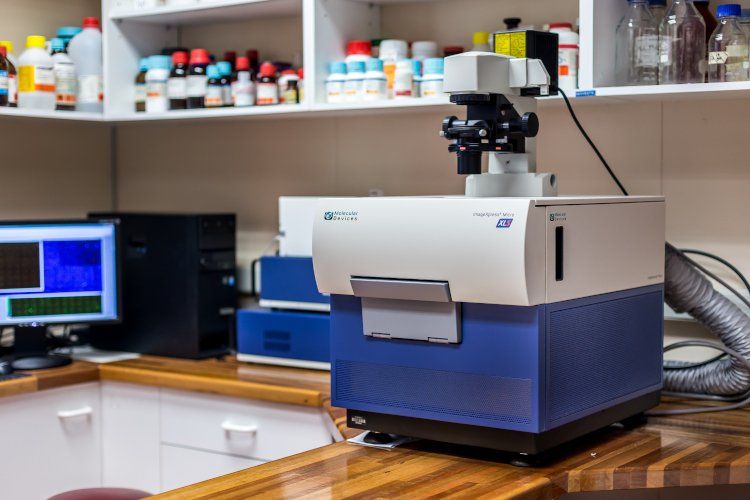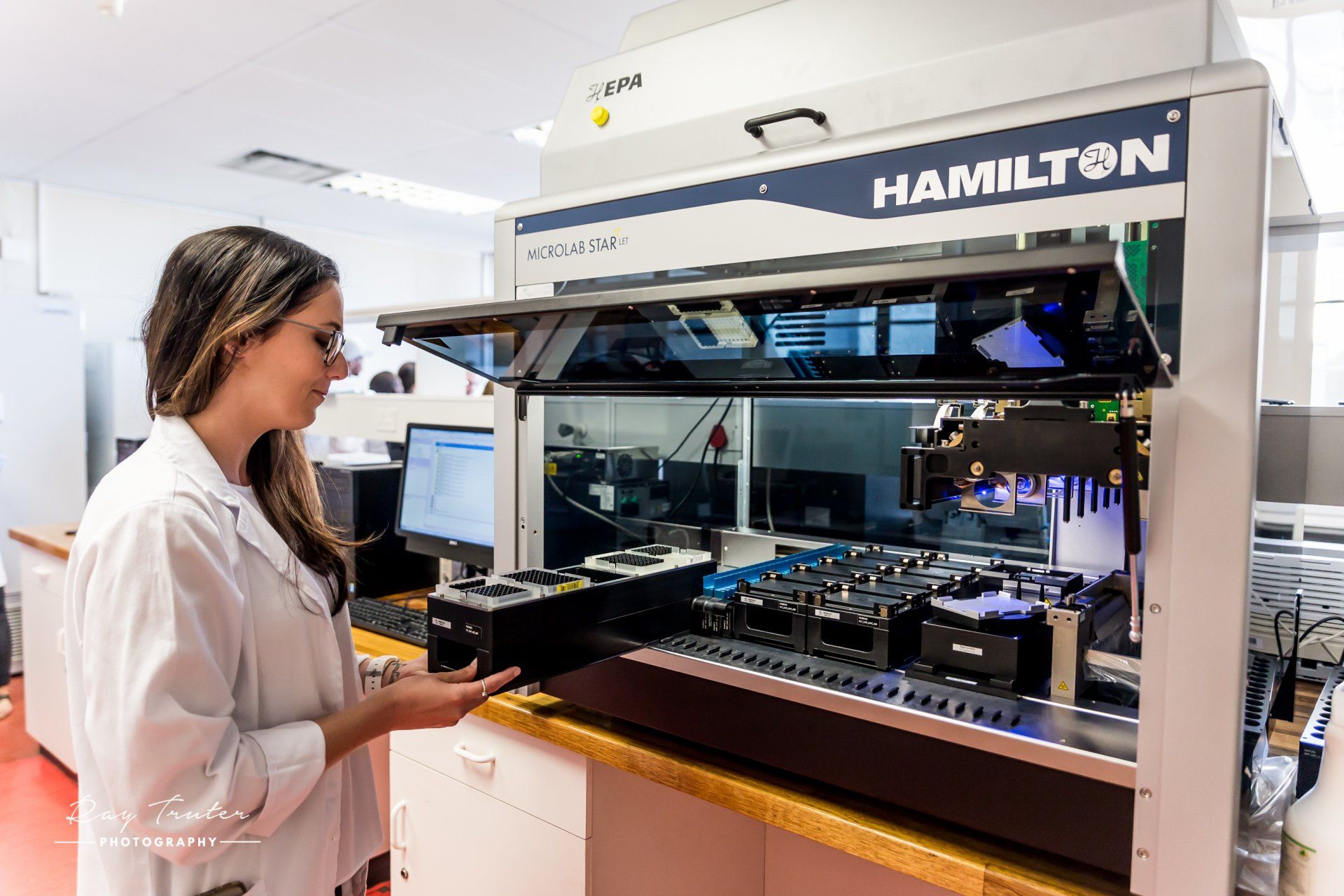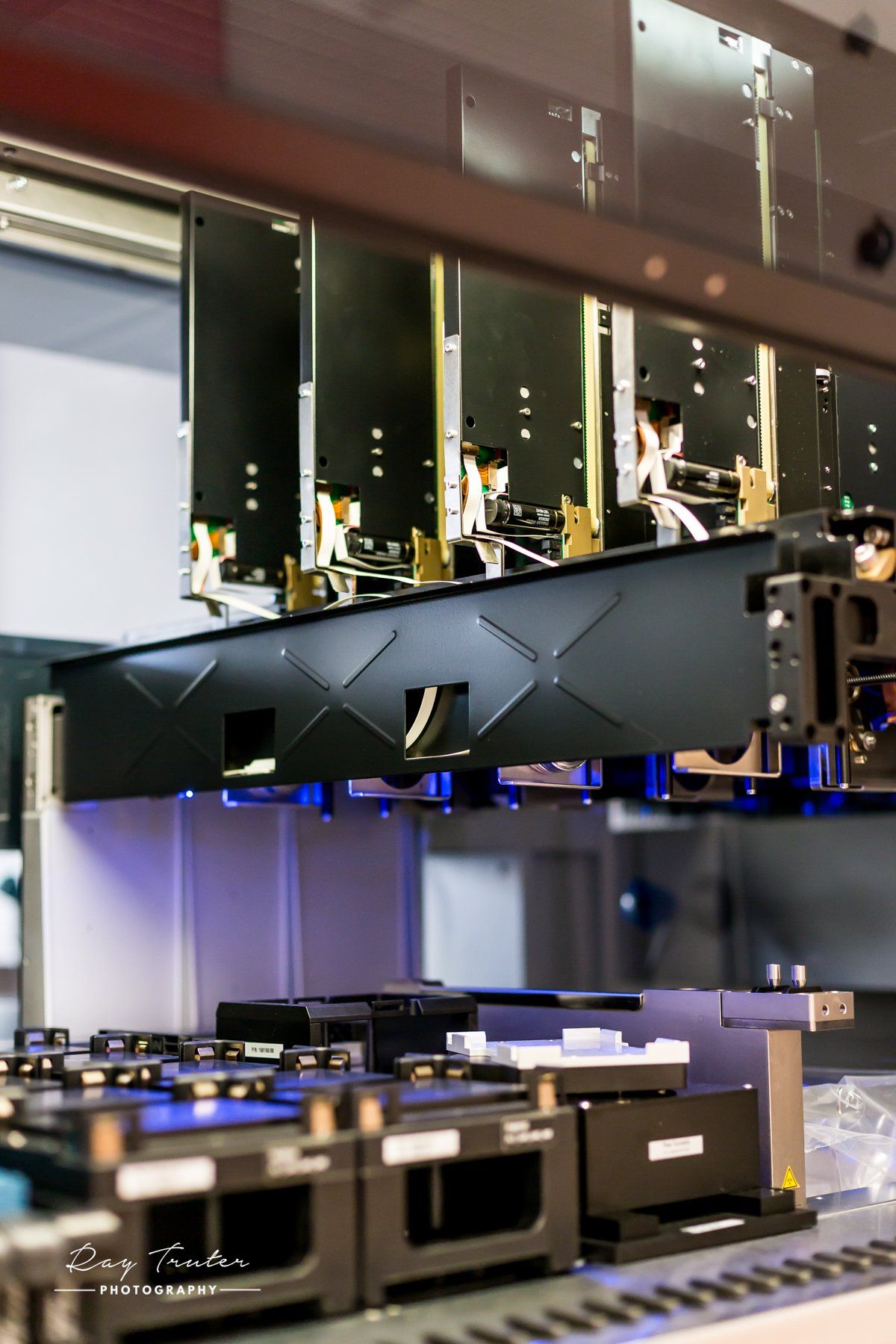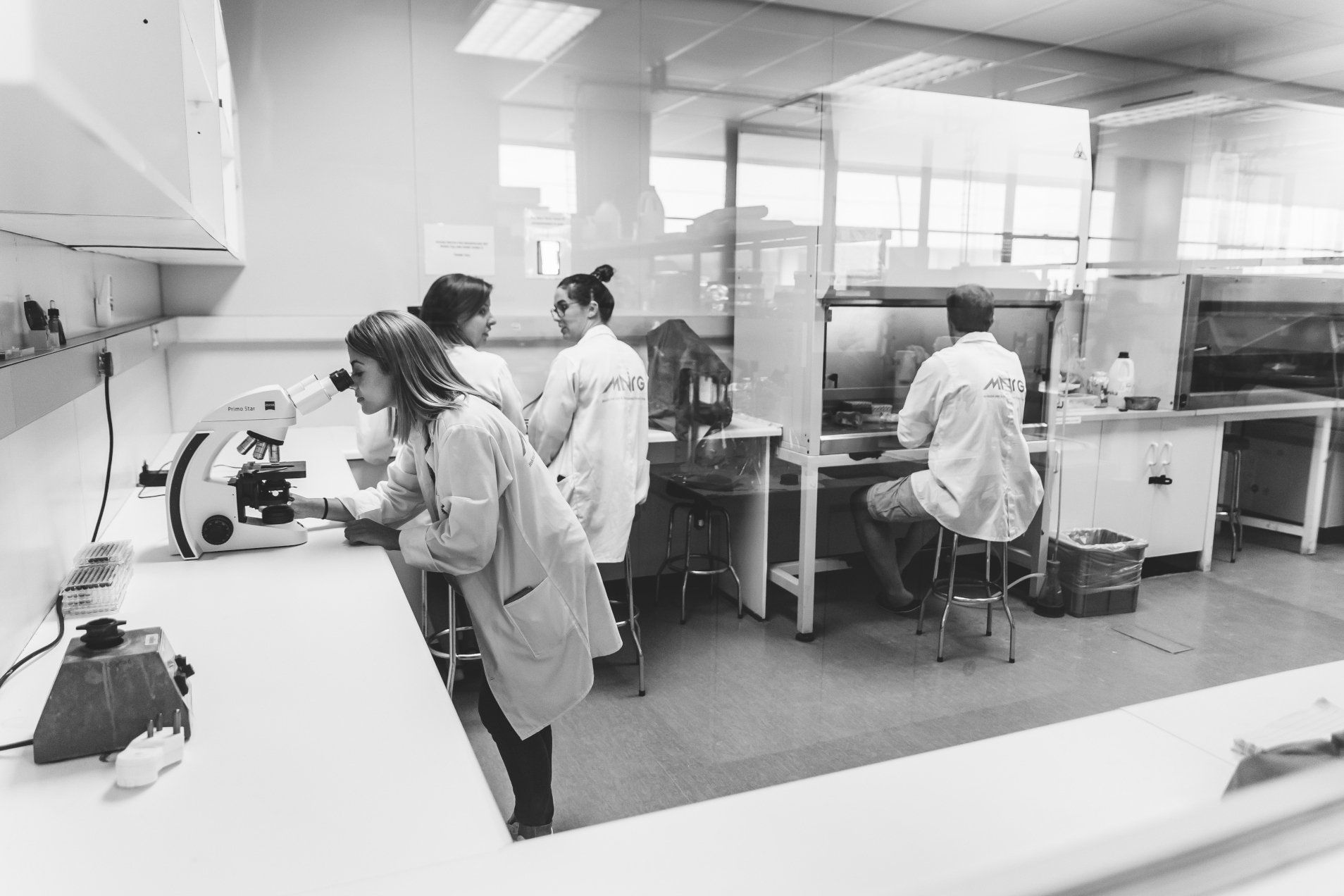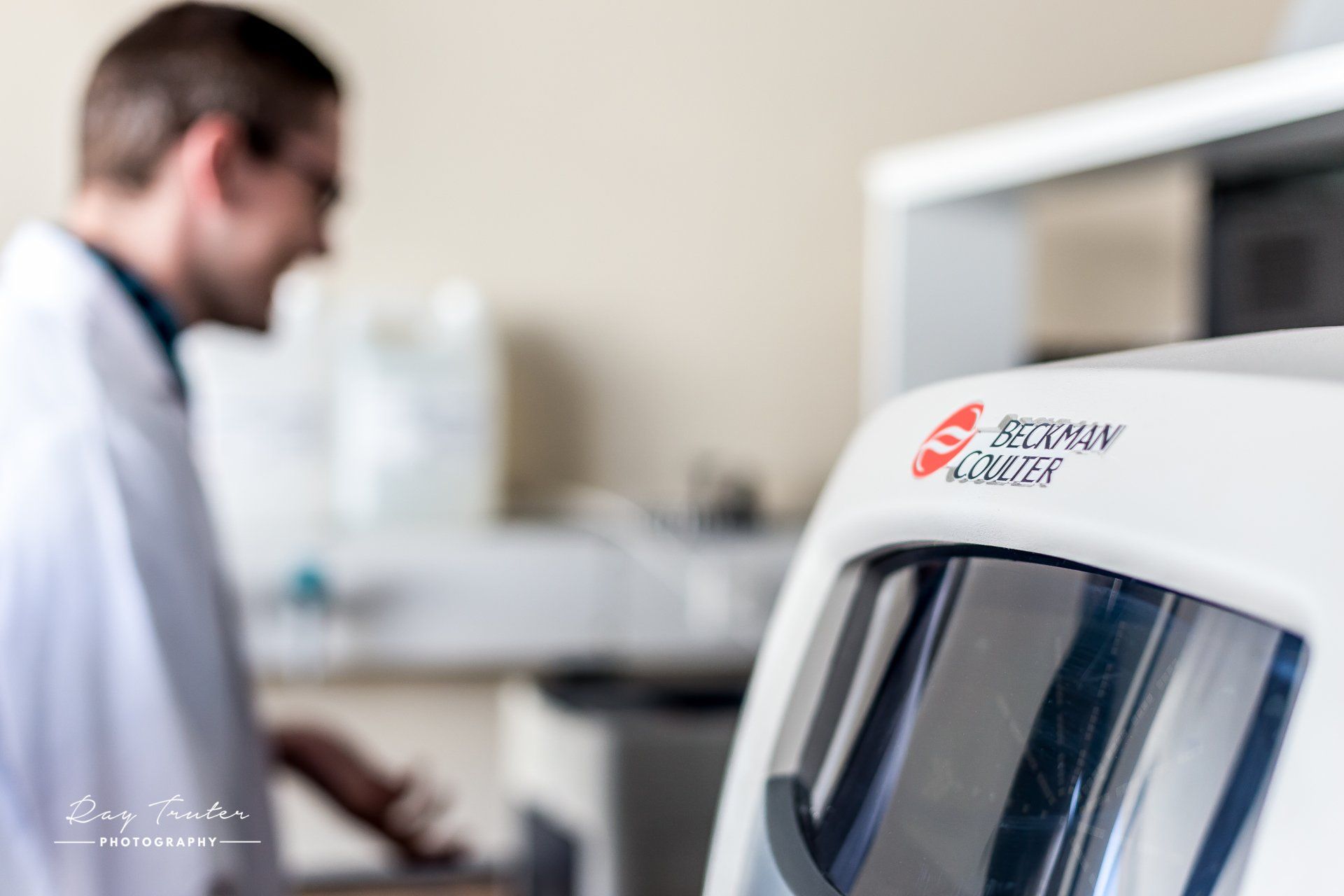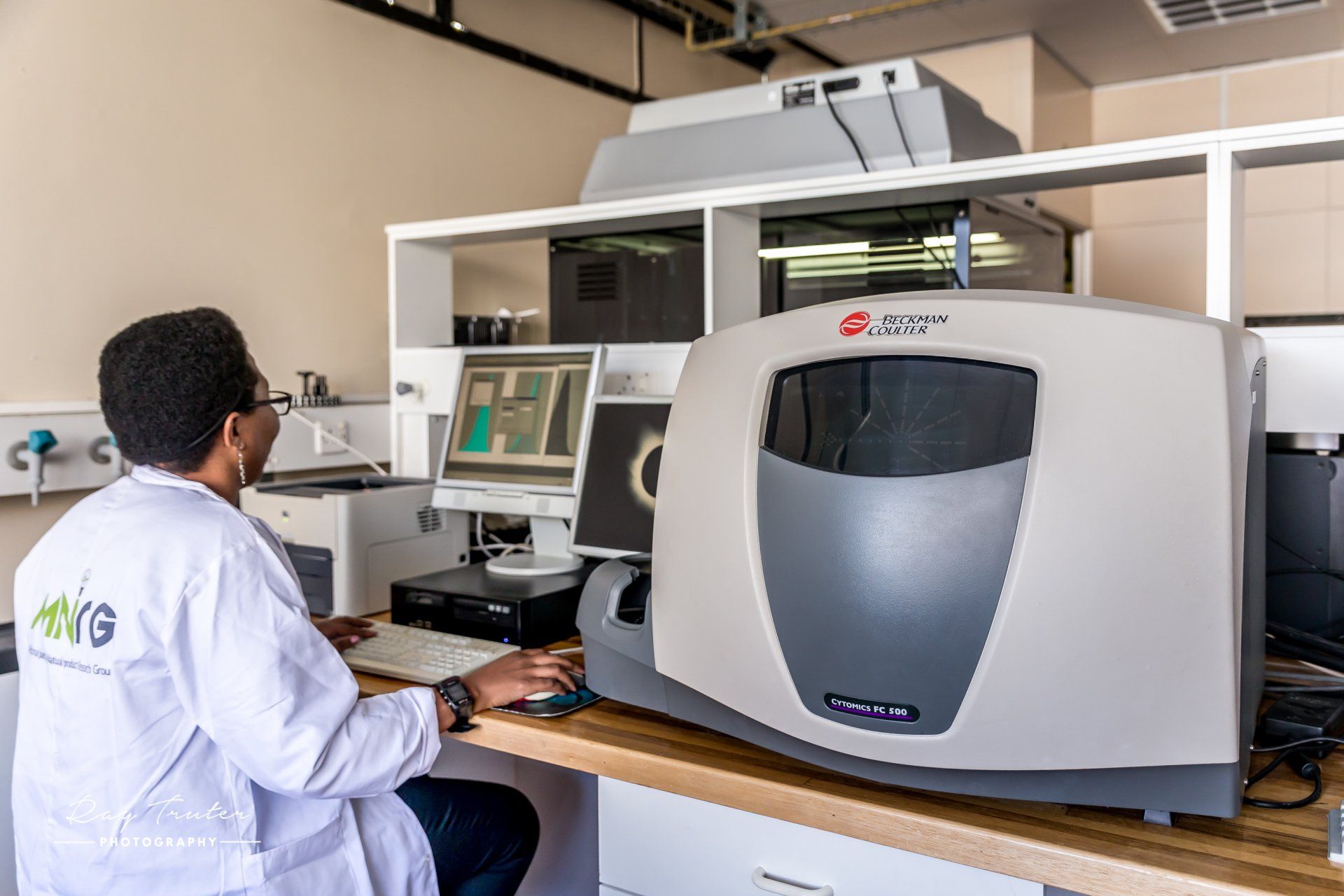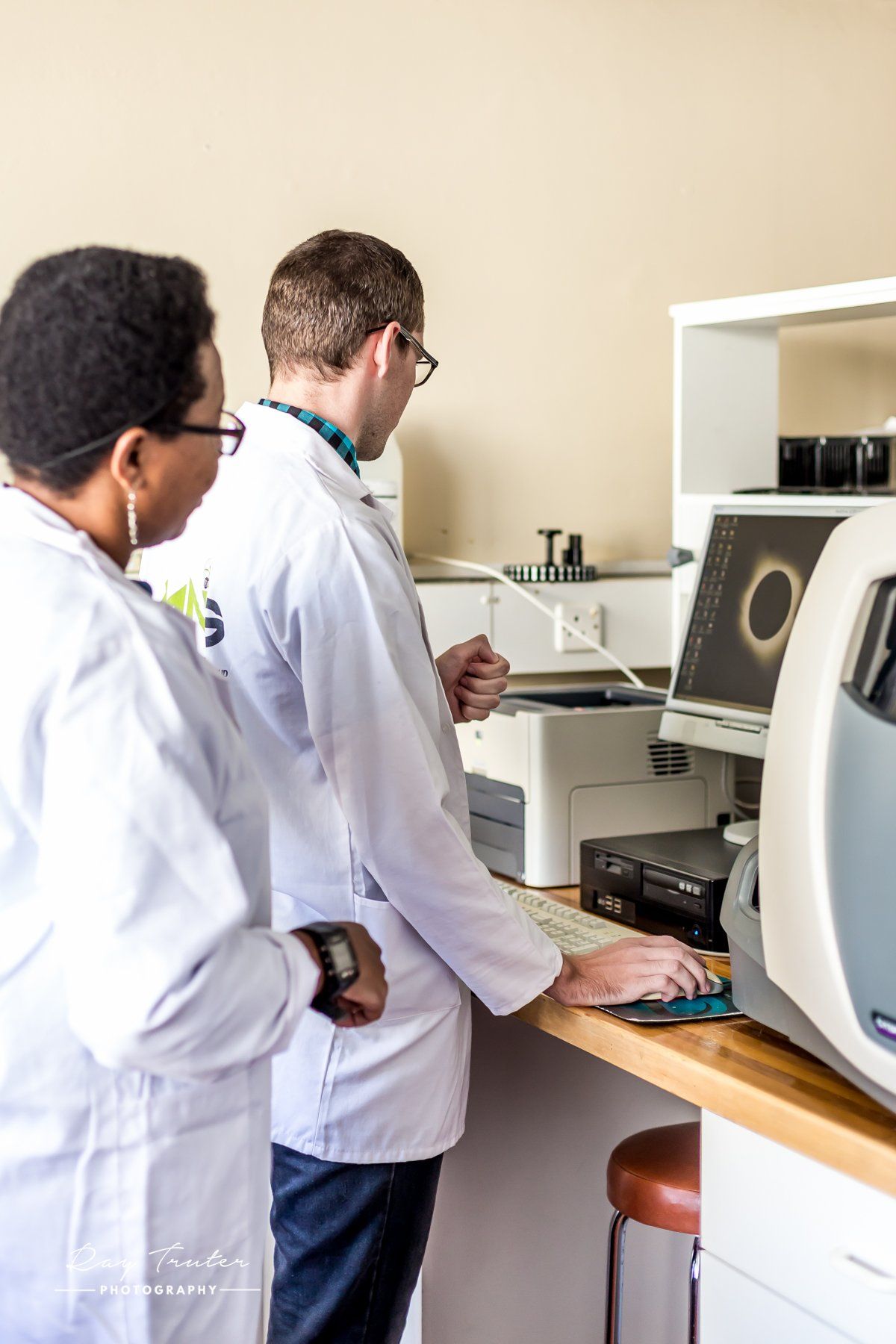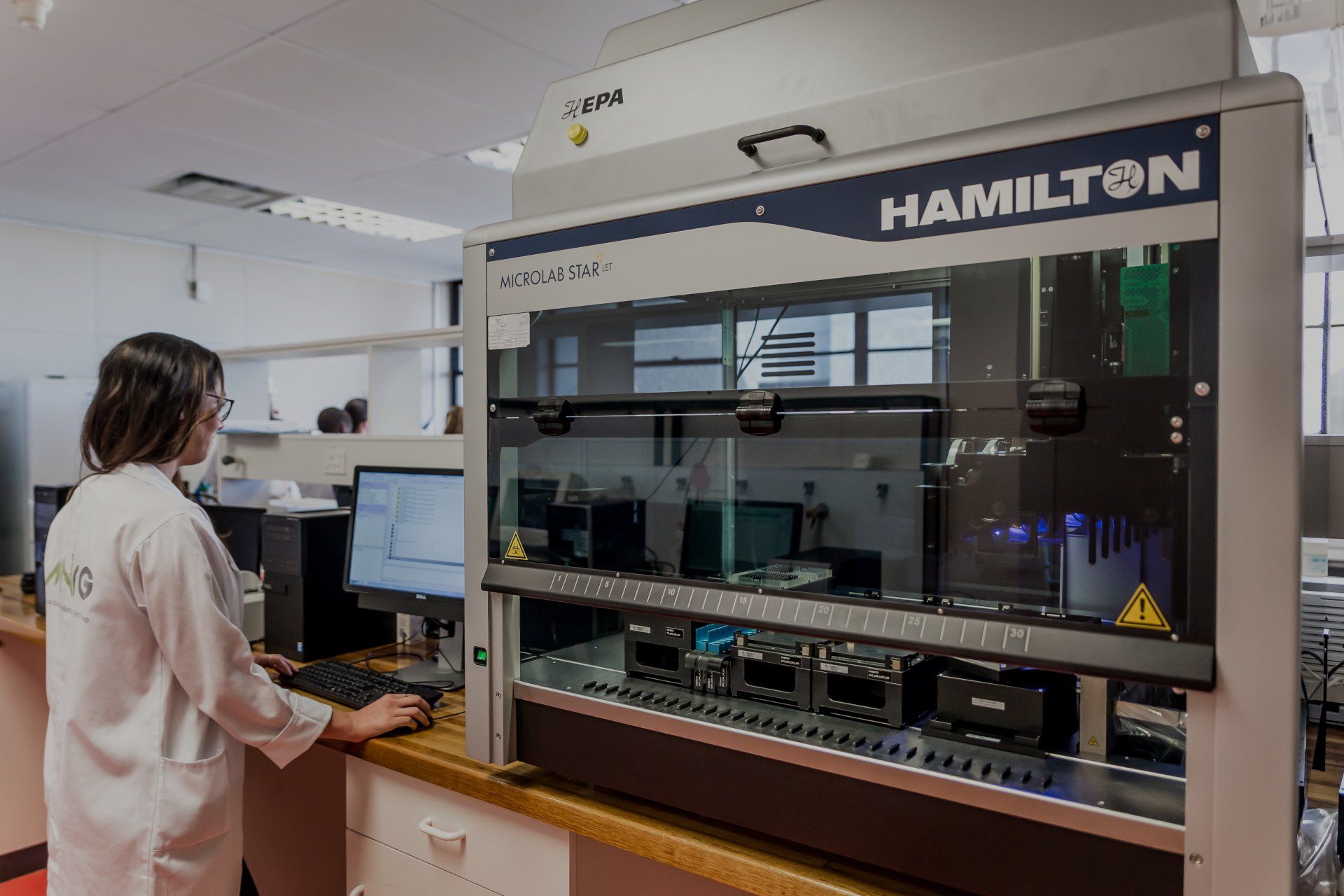Assay Services
Assay Services
All assays are performed using established methods published in peer-reviewed journals.
Request a Quote
Cytotoxicity Assays
Cytotoxicity is defined as the ability of an agent to produce a toxic effect on a cell. Cytotoxicity assays are used to test the ability of cells to continue proliferating in the presence of a test compound or substance over a specific time period.
Cell based viability assessment with the choice of various tumorigenic and non-tumorigenic cell lines. Two end point analysis options are available:
• MTT (metabolic activity)
• Hoechst 33342/Propidium iodide dual staining analysed using the ImageXpress Micro XLS
Anti-Proliferation Assays
Various assays are available to explore the molecular mechanism of anti-proliferatory samples. Anti-proliferation analysis will provide information on the mechanism of cell death induced by a sample and suggest anti-cancer potential. Mechanism based assays include:
• Cell cycle analysis
• Apoptosis (caspase activation, annexin V binding, sub-G1 DNA content, mitochondrial depolarisation)
• Senescence (SA-β-GAL activity)
• Autophagy (acidic vacuole quantification)
Numerous cell lines to choose from including: A549, B16F10, MeWo, HT-29, Caco-2. MCF-7, HeLa, PC3, Mia-PaCa, HepG2, U937 and Jurkat.
Anti-Microbial Assays
The search for new anti-microbial agents has increased due to an increase in occurrence of antibiotic resistant pathogenic bacteria, leading to treatment failure. Anti-microbial susceptibility testing can be utilized for drug discovery and the prediction of therapeutic outcome. There are numerous methods for the screening of biological extracts for potential anti-microbial activity.
• The microbroth dilution susceptibility method
• The p-Iodonitrotetrazolium chloride (INT) assay to determine the minimum inhibitory concentration (MIC) of biological extracts using INT dye
Anti-Oxidant Assays
The various aerobic metabolic processes can generate toxic by-products or free radicals, such as reactive oxygen (ROS) and reactive nitrogen species (RNS). These free radicals are highly reactive relative to their molecular forms. Therefore, under normal conditions, free radical levels can be controlled and detoxified by the anti-oxidants (AO) found in the body. However, the uncontrolled production and presence of free radicals culminates in oxidative stress and cell death.
AO capacity can be used as a parameter for medicinal bioactive constituents, using a range of AO methodologies that assess according to the type of anti-oxidants measured (lipophilic or hydrophilic, enzymatic or non-enzymatic), type of reagent used (radicalic or non-radicalic), solvent character (aqueous or organic) or by mechanism of reaction (hydrogen atom transfer or electron transfer).
The in vitro assays available are:
• DPPH method
• FRAP assay
• ORAC
• CAPe
• NO scavenging
• Cellular oxidative stress protection using CellRox
• Mitochondrial membrane potential protection using TMRE
Wound Healing Potential
The skin forms a protective barrier and acts as the primary defence mechanism preventing the invasion of pathogens from the external environment. Disruption to the integrity of the skin initiates a multistep process that ultimately leads to reconstruction of the damaged area and reestablishment of this barrier function. Due to the complexity of the wound healing process, numerous opportunities for therapeutic intervention to improve wound repair exist. Assays used for the determination of wound healing potential are:
• Collagenase inhibition
• Targeting of inflammatory intermediates
• Targeting of fibroblast function
Hepatotoxicity
Animal testing for hepatotoxicity is associated with many disadvantages, including high cost, ethical considerations as well as low predictive power relating to human hepatotoxicity. In vitro assays allow screening of large numbers of samples at lower cost and without the ethical dilemma associated with in vivo testing. Over the past two decades, improvements in technology and scientific methods have vastly increased the predictive power of in vitro hepatotoxicity methods and pharmaceutical companies are relying on these as a first line of screening to reduce unnecessary animal testing. Cell number and viability are essential parameters to include in an in vitro hepatotoxicity screen as well as mitochondrial dysfunction, steatosis and phospholipidosis. Hepatoxicity assays include:
• Hoechst 33342/Propidium iodide dual staining analysed using the ImageXpress Micro XLS
• Measurement of reactive oxygen species (ROS) using CellRox¬TM
• MitoTrackerTM Green and TMRE staining
• LipidToxTM Red and Green staining
• LysoTrackerTM Red staining
Custom Designed Expriments
We also design experiments according to the needs of the researcher and can combine many assays in one complete series of experiments as required. Please email us for more information.

